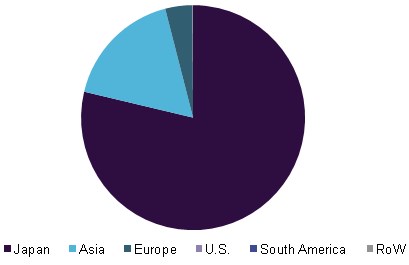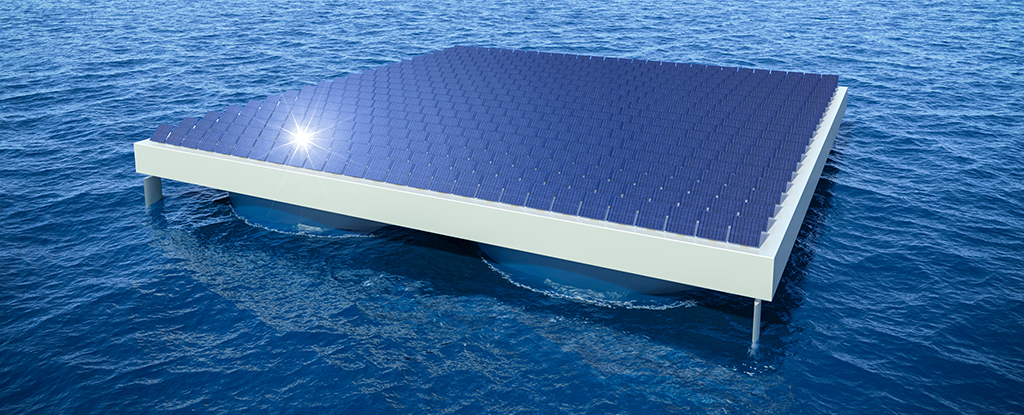Floating Solar Panels Market
Solar energy is constantly evolving and improving. Progress in the development of technological solutions does not stand still. A few years ago, typical solar power plants were most often located on roofs and ground, and now we are witnessing the emergence and formation of new segments – BIPV systems and floating solar power plants. One of the reasons for this phenomenon is the fact that the cost of using existing land plots and roofs is constantly growing, and there is a need to use additional areas for installing solar panels. For some countries, these trends are very relevant and promising now.
The adoption of floating panels in Japan is high, as the country is densely populated with low land availability for installation of solar energy plants. Furthermore, lack of natural resources coupled with high dependence of the country on renewable power generation for meeting its energy requirements is expected to propel market growth.
The technology is expected to foresee abundant growth over the forecast period on account of rapid demand primarily in Asia Pacific. Rising installations in China and Japan coupled with upcoming commercial projects in India is likely to fuel growth over the projected period.

The demand for floating panels in countries prone to drought is expected to witness significant growth over the forecast period as the installation of these systems on water bodies decreases the evaporation rate and slows down the algal growth rate, which in turn maintains the water purity.
The demand for stationery panels accounted for over 90% of the overall revenue share in 2015 owing to cost benefits associated with the technology as compared to its counterparts. The installation cost of stationery floating systems is lower as compared to the tracking technology owing to the use of inexpensive and high strength plastic in its construction.
The increasing investments of the solar panel manufacturers and installers in developing a durable, stable and reliable solar tracking technology with low maintenance cost is expected to trigger the demand over the forecast period. Tracking panels are highly efficient owing to its ability to track the sunlight, which improves the operational efficiency of the system.
Rising penetration of tracking technology in floating solar plants owing to superior operational efficiency is likely to have a positive impact on demand. However, high maintenance as compared to stationary plants owing to moving parts is expected to restrain growth over the projected period.
The penetration of the floating solar panels is high in Japan owing to the low availability of land coupled with limited reserves of fossil fuels. As a result, the government has sanctioned numerous plans of floating systems to meet the increasing consumption of electricity with low harmful effects on the environment.
The market is expected to grow in developed countries like the U.S., Canada, France, and Germany owing to regulations promoting the use of solar energy for electricity generation. Furthermore, factors including land availability as well as the ability of floating solar technology to decrease the impact of evaporation is expected to propel demand. The installation of floating solar plants decreases the evaporation rate of water, which in turn aids in decrease the possibility of drought in regions with high temperatures such as central states of the U.S.
The penetration of the technology is expected to increase in Asia Pacific owing to its high market potential. Furthermore, decreasing panel cost in the region coupled with rising awareness of the technology is likely to promote growth over the projected period.
Another unique idea is the Heliofloat floating platform, which is a flexible float the size of a football field and covered from edge to edge with solar panels. Such platforms can operate autonomously for operations with small energy consumers. Also, several such platforms can be connected to each other, forming a floating power system. Such systems can be used to provide electricity to residents of coastal cities.

The Heliofloat design feature is an open bottom, which makes the system simpler, cheaper and more resistant to waves. This technology makes it possible to develop an idea for a variety of industries. Heliofloat platforms offer new possibilities for desalination plants and biomass extraction processes for salt water.
In Ukraine, one of the options may be the use of small solar floating platforms on the lakes. Due to the absence of strong waves, the design for such a system is simple and cheap, and also does not require special maintenance. At the same time, valuable land resources are conserved, making such solar power plants profitable for private power plants. For more detailed information, please contact our office for advice.